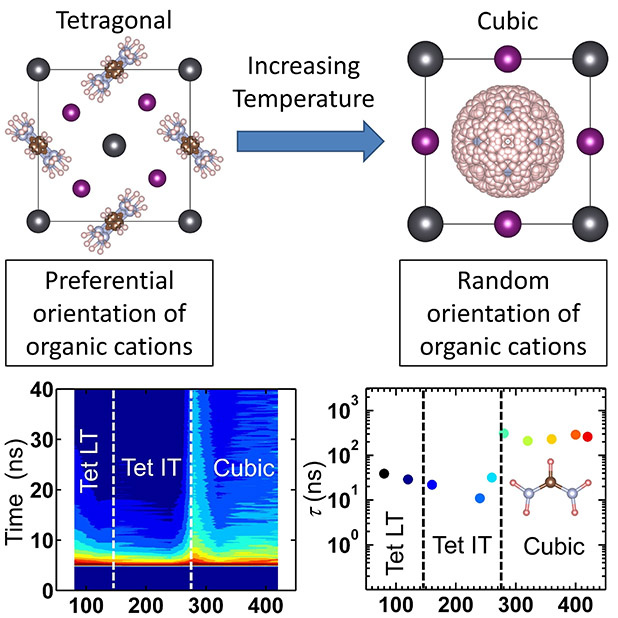Scientists working with hybrid organic/inorganic perovskite solar cells have discovered that positively charged molecules rotate within a solar cell, and that this movement has the effect of screening excited electrons from recombination, thus increasing the solar cell’s performance.
The team, led by researchers from the University of Virginia, discovered a mechanism whereby positively charged organic molecules (cations) rotate within a perovskite crystal, screening the excited charge carriers. The researchers describe this as the dominant mechanism behind the long carrier lifetime which is responsible for perovskite material’s strong performance as a solar cell.
A combination of neutron and x-ray diffraction, high-performance computing, and opto-electronic measurements was used to observe the effects. The research paper, Origin of long lifetime of band edge charge carriers in organic-inorganic lead iodide perovskites, published in the journal Proceedings of the National Academy of Sciences, notes that the more freedom to rotate available to the cations, the longer the charge carrier lifetime of the material.
Popular content
This discovery could allow scientists to further even higher efficiency perovskite materials, though as with all developments in this area, the prospect of stability and degradation remains a barrier.
This content is protected by copyright and may not be reused. If you want to cooperate with us and would like to reuse some of our content, please contact: editors@pv-magazine.com.



By submitting this form you agree to pv magazine using your data for the purposes of publishing your comment.
Your personal data will only be disclosed or otherwise transmitted to third parties for the purposes of spam filtering or if this is necessary for technical maintenance of the website. Any other transfer to third parties will not take place unless this is justified on the basis of applicable data protection regulations or if pv magazine is legally obliged to do so.
You may revoke this consent at any time with effect for the future, in which case your personal data will be deleted immediately. Otherwise, your data will be deleted if pv magazine has processed your request or the purpose of data storage is fulfilled.
Further information on data privacy can be found in our Data Protection Policy.